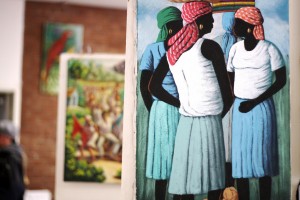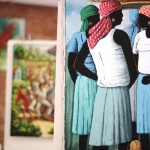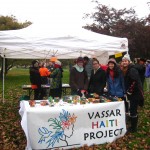About two weeks ago, VHP was struck by the news of the death of one of our school’s six-year old girl, who was infected with cholera. Below, David Bridgman-Packer ’12, head of our Medical Initiative discusses cholera far beyond a mere exposition of the disease, embedding the rise of cholera in Haiti in a larger network of multidimensional inequality.
VHP recently heard from our partners in Haiti that a second-grade student in our school has passed away from a severe case of cholera. Her brother has also contracted cholera, but was able to receive treatment in time at Alma Mater Hospital in Gros Morne. Their family is one of the poorest in the area, and now joins thousands of others across Haiti that have lost children to the cholera epidemic.
The arrival of Cholera in Haiti has been swift and pervasive, and Chermaitre is not alone in losing members of its community. The opportunistic disease thrives on poor infrastructure and inadequate sanitation. In the months after the 2010 earthquake, the breakdown of government sanitation programs, the destruction of homes, and the resulting overpopulation of tent cities created the ideal environment for an outbreak. When cholera first appeared in the Artibonite Valley, it moved quickly downhill in rivers and streams to the drinking water of Port-au-Prince. In has since moved outward, affecting all corners of Haiti. The disease has seen a resurgence over the summer, when heavy rains polluted drinking-water sources. At the latest count reported by Partners in Health, 6600 deaths have occurred, with near half a million cases reported. The disease has infected over five percent of the Haitian Population.
The response to cholera has been multidimensional and international. In collaboration with the Ministry of Public Health, NGOs have established Cholera Treatment Centers across the country, which have treated hundreds of thousands of cases. A broad public education campaign has also begun, with the government teaming up with the popular Haitian graffiti artist Jerry to produce posters on sanitation and disease prevention. Tens of millions of dollars have been spent on the response.
However, the underlying conditions that allowed cholera to spread still remain, and the implementation of a national response is hindered by poor communication and an overwhelmed healthcare system. Tent cities remain abundant as the rebuilding effort lags. Outside of Port-au-Prince, much of the infrastructure needed to prevent the disease did not exist before the earthquake. In the rural area where VHP works, rebuilding is not the issue. We are building from scratch. To reach the nearest hospital, villagers in Chermaitre must walk ten miles across two mountains, along a streambed, and finally along a road to Alma Mater Hospital, where definitive care can be provided.
Looking ahead, where do we go from here? What small pieces of the puzzle can VHP connect to do our part for Haiti? As we continue construction on our new clinic, the necessity of long-term healthcare is as clear as ever. Our clinic is the first step toward providing basic sustainable healthcare to the villages in the area. To fight the increasing threat of cholera, we will be working with the community to educate about the risks of the disease and the ways to avoid it. For severe cases such as two children, we will be able to arrange transportation by car to the hospital. Finally, in partnership with Claire Frohman and the VHP water initiative, we will be working to ensure that the water from our well remains purified and potable.
This recent news from Chermaitre strikes close to home. Across boundaries of distance, language, and culture, our fragile grasp on life remains. When hearing of children dying from disease – from preventable disease – we are reminded of the deep inequalities ingrained in our world, and haphazard chance that placed us where we are.






























